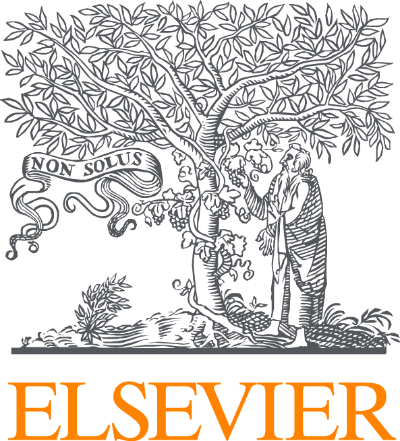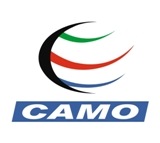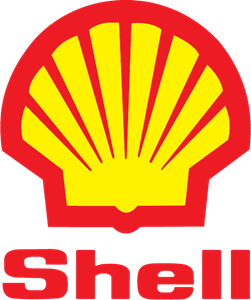Latest news
Evolving Chemometric Models: A New Paradigm for Handling Dynamic (Stream-based) Calibration in Chemical Industry
Edwin Lughofer
The presenter will conceive a new paradigm in the calibration and design of chemometric models from (FT-)NIR spectra. Opposed to batch off-line calibration through the usage of classical statistical methods (such as PLSR, PCR and several extensiond) or more general machine learning based methods (such as support vector machines, neural networks, fuzzy systems), evolving chemometric models can serve as core engine for addressing the incremental updating of calibration models fully automatically in on-line or even in-line installations. Such updates may become indispensable whenever a certain system dynamics or non-stationary environmental influences cause significant changes in the process. Typically, models trained in batch off-line mode then become outdated easily, leading to severe deteriorations of their quantification accuracy, which may even badly influence the (supervision of the) whole chemical process. An approach how to update chemometric models quickly and ideally with lowest possible costs in terms of additional target measurements will be presented in this talk. It will be based on PLS-fuzzy models where the latter are trained based on the score space obtained through the latent variables. This leads to a new form of a non-linear PLSR with embedded piece-wise local predictors, having granular characteristics and even offering some interpretability aspects. The update of the models will comprise
- Recursive parameter adaptation to adapt to permanent process changes and to increase model significance and accuracy (especially when models are off-line calibrated only on a handful of data).
- Evolution of new model components (rules) on the fly in order to account for variations in the process such as new operations modes, system states, which requires a change in the model’s ‘non-linearity degree’.
- Incremental adaptation of the PLS space in order to address a shift in the importance of wavelengths (on the target) over time.
In order to reduce target measurements during on-line usage, the model update will only take place upon drift (=change) alarms (induced by incremental drift indicators) and then with actively selected samples; therefore, a single-pass active learning paradigm will be exploited respecting feature space exploration. In order to omit target measurements for model adaptation completely, unsupervised adaptation strategies for fuzzy models and a new variant of PLS, termed as domain invariant PLS (di-PLS), will be demonstrated.
The talk will be concluded with two real-world applications from the chemical industry (melamine resin and viscose production), where the evolving chemometric models have been successfully installed and used; some results will be presented.
Mini-CV:
Edwin Lughofer received his PhD-degree from the Johannes Kepler University Linz (JKU) in 2005. He is currently Key Researcher with the Fuzzy Logic Laboratorium Linz / Department of Knowledge-Based Mathematical Systems (JKU) in the Softwarepark Hagenberg, see www.flll.jku.at/staff/edwin/.
He has participated in several basic and applied research projects on European and national level, with a specific focus on topics of Industry 4.0 and FoF (Factories of the Future). He has published around 170 publications in the fields of evolving fuzzy systems, machine learning and vision, data stream mining, chemometrics, active learning, classification and clustering, fault detection and diagnosis, quality control, predictive maintenance, including 60 journals papers in SCI-expanded impact journals, a monograph on ’Evolving Fuzzy Systems’ (Springer) and an edited book on ’Learning in Non-stationary Environments’ (Springer). In sum, his publications received 2900 references achieving an h-index of 33. He is associate editor of the international journals IEEE Transactions on Fuzzy Systems, Evolving Systems, Information Fusion, Soft Computing and Complex and Intelligent Systems, the general chair of the IEEE Conference on EAIS 2014 in Linz, the publication chair of IEEE EAIS 2015, 2016 and 2017, and the Area chair of the FUZZ-IEEE 2015 conference in Istanbul. He co-organized around 20 special issues and special sessions in international journals and conferences. In 2006 he received the best paper award at the International Symposium on Evolving Fuzzy Systems, in 2013 the best paper award at the IFAC conference in Manufacturing Modeling, Management and Control (800 participants) and in 2016 the best paper award at the IEEE Intelligent Systems Conference.
On the Rise, Demise, and Reprise of Chemometric Tools: Some Case Studies
Peter Wentzell
The field of chemometrics can be considered to be relatively mature and its history is reflected in the evolution of its constituent methodologies and their application both within and outside of chemistry. Some of these have enjoyed continuous widespread popularity, while others have been relegated to the shadows after a brief incandescence, and still others have enjoyed a rebirth for a variety of reasons. The success or failure of a given methodology is driven by a variety of factors that include academic culture, practical need, active promotion, commercial availability, simplicity, relevance to mainstream or niche applications, demonstrated advantages over established methods, and (conversely) demonstrated redundancy with established methods.
This presentation will attempt to provide a broad view of the evolution of chemometric tools in general, with some specific exemplars relevant to the current state of the art. In addition to bibliometric trends of various chemometric methodologies that include both those with resilience (e.g. partial least squares, PLS) and those that have been more transient (e.g. Kalman filtering), a more rigorous discussion of some methods will be considered. These include maximum likelihood principal components analysis (MLPCA), projection pursuit analysis (PP), independent component analysis (ICA) and factor analysis (FA). It is hoped that this will provoke a discussion on where chemometrics has been and where it is headed.
Mini-CV:
Peter Wentzell is a Professor in the Department of Chemistry at Dalhousie University in Halifax, Nova Scotia. He completed his PhD with Dr. Stan Crouch at Michigan State University and carried out post-doctoral work at the University of British Columbia before taking up his current position in 1989. He has also spent sabbaticals at the University of Washington with Dr. Bruce Kowalski (1996) and in the Biology Department at the University of New Mexico (2003). He has been involved in Chemometrics research for more than 25 years and served as North American Editor of Chemometrics and Intelligent Laboratory Systems for eight years. Although he has a wide range of research interests, his principal focus has been on understanding and utilizing measurement errors in multivariate analysis, as well as on the development of new tools for exploratory analysis. His distinctions include the Eastern Analytical Symposium Award for Outstanding Achievements in Chemometrics (2015), the Journal of Chemometrics Kowalski Prize (2014) and the Dalhousie Faculty of Science Award for Excellence in Teaching (2010).
PLS for regression and binary classification: robustness and sparsity
Peter Filzmoser
Robust methods for multiple linear regression are under development already since the 1970s. Nowadays, methods are available that are robust to a high amount of contamination, while being still highly efficient if the usual model assumptions are valid. Moreover, fast algorithms have been developed and implemented in the standard statistical software environments.
For high-dimensional data, particularly if the number of explanatory variables is higher than the number of observations, robust methods are mainly available in the context of Partial Least Squares (PLS) regression. However, these methods loose their predictive power if the high-dimensional data contain many noise variables which are not related to the response. It is desirable that their corresponding regression coefficients are zero, such that their contribution to the prediction is suppressed. This is possible with an L1 penalty term added to the objective function, as it has been done in LASSO regression, leading to so-called sparsity of the vector of regression coefficients.
We will present a robust and sparse PLS method and compare to standard methods with simulated and real data sets. Moreover, an extension of the method to a two-group classification method which is sparse and robust will be outlined. The methods are available in the R package sprm.
Mini-CV:
Peter Filzmoser is full professor at the statistics department of the Vienna University of Technology. His main research interests include robust statistics, methods for compositional data analysis, statistical computing, and R. For more information, see: http://www.statistik.tuwien.ac.at/public/filz/.
First Announcement ICRM2017 available for download
Follow this link to download the First Announcement of the ICRM2017 symposium to be held 10-14th September 2017 in Berg and Dal, The Netherlands:
Registration for ICRM2017 now open
We are delighted to announce that the registration form for ICRM2017 is available.
Submission of abstracts
Standard ICRM templates for Word or LaTeX are available for abstracts. Please email the filled out templates to our conference secretary at
The scientific committee will review all abstracts and will contact you by email to inform you if the submission will be accepted. Note that only submissions from registered participants are taken into the review process. The reviews will be completed on July 1st 2017.
Please specify in the email if you want to apply for an oral (contributed speaker) or for a poster presentation. Be aware there is place for only a limited number of oral presentation in the ICRM2017 program.
Click here for a Word template: Word
Click here for a Latex template Latex
Conference program ICRM 2017
Last updated on Wednesday, August 30, 2017.
| Sunday, September 10 | ||
| 16.00 - 18.00 | Registration and welcome reception | |
| 18.00 - 20.00 | Dinner buffet | |
| Monday, September 11 | ||
| 08.50 - 09.00 | Opening ICRM 2017 | |
| 09.00 - 09.50 | Invited lecture 1: Peter Wentzell | |
| On the Rise, Demise, and Reprise of Chemometric Tools: Some Case Studies | ||
| 09.50 - 10.05 | Discussant: Cyril Ruckebusch | |
| 10.05 - 10.30 | Floor discussion | |
| 10.30 - 11.00 | Break | |
| 11.00 - 11.30 | Contributed lecture 1: Ingrid Måge | |
| Identifying common and distinctive variation in multiple data blocks – comparison of methods | ||
| 11.30 - 12.00 | Contributed lecture 2: Maarten Kampert | |
| An Improved Basis for Clustering Objects on Subsets of Attributes (COSA) | ||
| 12.00 - 13.00 | Lunch | |
| 13.00 - 14.00 | Poster session | |
| 14.00 - 15.30 | Tutorial 1: PCA, PLS and beyond | |
| Lecturer: Jeroen Jansen | ||
| 15.30 - 16.00 | Break | |
| 16.00 - 17.30 | Tutorial 2: ASCA: ANOVA-Simultaneous Component Analysis | |
| Lecturers: Federico Marini and Age Smilde | ||
| 18.00 - 19.30 | Dinner buffet | |
| 19.30 - 20.20 | Invited lecture 2: Onno de Noord | |
| Chemometrics in industry: a 360˚ view | ||
| 20.20 - 20.35 | Discussant: Age Smilde | |
| 20.35 - 21.00 | Floor discussion | |
| Tuesday, September 12 | ||
| 09.00 - 09.50 | Invited lecture 3: Peter Filzmoser | |
| PLS for regression and binary classification: robustness and sparsity | ||
| 09.50 - 10.05 | Discussant: Beata Walczak | |
| 10.05 - 10.30 | Floor discussion | |
| 10.30 - 11.00 | Break | |
| 11.00 - 11.30 | Contributed lecture 3: Jasper Engel | |
| Untargeted diagnosis using untargeted metabolomics in combination with sparse Mahalanobis distance metrics | ||
| 11.30 - 12.00 | Contributed lecture 4: Eva Gorrochategui | |
| ROIMCR: a powerful data analysis strategy for LC-MS metabolomic data sets | ||
| 12.00 - 13.00 | Lunch | |
| 13.00 - 14.00 | Poster session | |
| 14.00 - 15.30 | Tutorial 3: MCR: Multivariate Curve Resolution | |
| Lecturer: Anna de Juan | ||
| 15.30 - 16.00 | Break | |
| 16.00 - 17.30 | Tutorial 4: Penalties | |
| Lecturer: Paul Eilers | ||
| 18.00 - 19.30 | Dinner buffet | |
| 19.30 - 20.20 | Invited lecture 4: Morten Rasmussen | |
| Microbiome – Challenges and Opportunities | ||
| 20.20 - 20.35 | Discussant: Agnieszka Smolinska | |
| 20.35 - 21.00 | Floor discussion | |
| Wednesday, September 13 | ||
| 09.00 - 09.50 | Invited lecture 5: Edwin Lughofer | |
| Evolving Chemometric Models: A New Paradigm for Handling Dynamic (Stream-based) Calibration in Chemical Industry | ||
| 09.50 - 10.05 | Discussant: Jeroen Jansen | |
| 10.05 - 10.30 | Floor discussion | |
| 10.30 - 11.00 | Break | |
| 11.00 - 11.30 | Contributed lecture 5: Edoardo Saccenti | |
| Is being NORMAL(ized) the right way to (CORR)relate with your peers? | ||
| 11.30 - 12.00 | Contributed lecture 6: Ivan Castillo | |
| Feature Selection: Filtering Methods for Regression | ||
| 12.00 - 13.00 | Take-away lunch and bus travel to Nijmegen city centre | |
| 13.00 - 17.00 | Social program in Nijmegen city centre | |
| 17.00 - 22.30 | Bus travel to restaurant "De Thornsche Molen" and conference dinner | |
| 22.30 - 23.00 | Bus travel to Hotel Val Monte | |
| Thursday, September 14 | ||
| 09.00 - 09.50 | Invited lecture 6: Marieke Timmerman | |
| Additive and bilinear models to unravel multivariate experimental design effects | ||
| 09.50 - 10.05 | Discussant: Johan Westerhuis | |
| 10.05 - 10.30 | Floor discussion | |
| 10.30 - 11.00 | Break | |
| 11.00 - 11.50 | Invited lecture 7: Lieven De Lathauwer | |
| Structure in matrix/tensor decompositions | ||
| 11.50 - 12.05 | Discussant: Alberto Ferrer | |
| 12.05 - 12.30 | Floor discussion | |
| 12.30 - 12.40 | Farewell and conference closing | |
| 12.40 - 14.00 | Lunch | |
Fee and Registration info
Conference fee
- Early fee: 1265 euro, when you register before May 15st, 2017.
- Regular fee: 1415 euro, when you register from May 15st, 2017.
- Student early fee: 990 euro, when you register before May 15st 2017.
- Student regular fee: 1100 euro, when you register from May 15st, 2017.
The registration fee covers:
- Welcome reception.
- Hotel booking (4 nights).
- Breakfast, lunch, dinner, refreshments.
- Admission to all sessions / exhibitions / conference courses
- Conference materials.
- Conference dinner.
- Excursion / social event.
It is not possible to register for only a part of the conference.
Registration
Click HERE to start the registration procedure for ICRM2017.
Cancellations
Substitutions may be made at any time, but please advise the conference secretariat of a change of name. If you find it necessary to cancel the registration completely, please notify the symposium secretariat immediately. Provided written notice is received by May 20th 2017, a full refund will be given minus a 10% administration charge. Provided written notice is received by July 1st 2017, a 50% refund will be given. Registrations cancelled after July 1st 2017 and no-shows remain payable at full charges.
ICRM2017 Contact
You can contact us by email at
Keynote lecturers
- Peter Wentzell (Dalhousie University, Halifax, Canada) - On the Rise, Demise, and Reprise of Chemometric Tools: Some Case Studies
- Lieven De Lathauwer (KU Leuven, Belgium) - Structure in matrix/tensor decompositions
- Peter Filzmoser (TU Wien, Austria) - PLS for regression and binary classification: robustness and sparsity
- Morten Rasmussen (University of Copenhagen, Denmark) - Microbiome: Challenges and Opportunities
- Marieke Timmerman (RU Groningen, The Netherlands) - Additive and bilinear models to unravel multivariate experimental design effects
- Onno de Noord (Shell Amsterdam, The Netherlands) - Chemometrics in industry: a 360° view
- Edwin Lughofer (Johannes Kepler University Linz, Austria) - Evolving Chemometric Models: A New Paradigm for Handling Dynamic (Stream-based) Calibration in Chemical Industry






